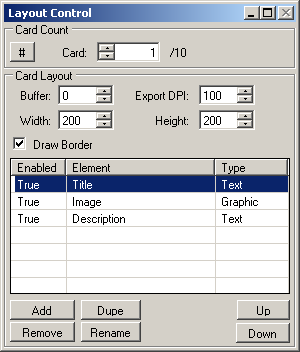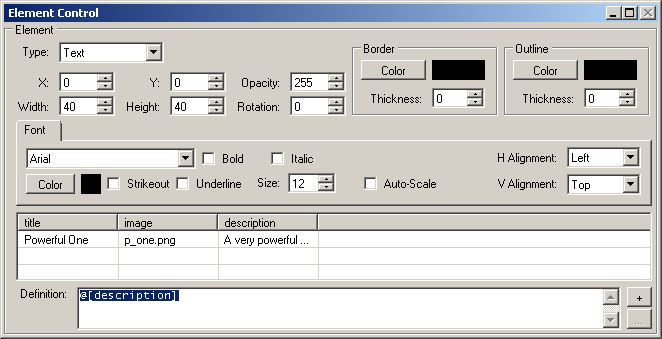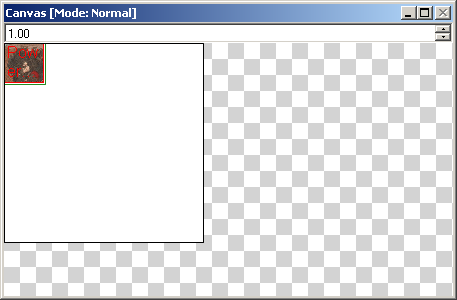-
Notifications
You must be signed in to change notification settings - Fork 43
user basic deck
This is a basic guide to creating a reasonably simple deck using the CSV editor of your choice and CardMaker.
Load your CSV (comma separated value) spreadsheet editor of choice -- here are some recommended options:
- OpenOffice Calc - Free, very organized, and has a mind of its own. (this tutorial shows images from Calc)
- Microsoft Office - Not free, very organized, and has a mind of its own.
- Text Editor - Hopefully free, totally unorganized, and you completely control it.
Setup the required column -- The only column that is actually required is the first. I recommend naming it "Count" as it will avoid any confusion. This column represents the number of cards to generate from each row (important if you want multiple of the same card).

Setup the reference columns - These are the variable bits of information that will be used to create your card. Each row of the spreadsheet represents a card.

The remaining columns (other than Count) are for you to decide based on the contents of your card. There is no limit on the number though for your own sanity I do not recommend too many! For this tutorial I created those shown below. It is important to note that the column name can be anything!
- Title - This column will contain the title displayed on the cards
- Image - This column will contain the image displayed on the cards
- Description - This column will contain the descriptive text on the cards
In the image below you can see the populated versions of each row representing a single card. In a few cases I have the count set to something greater than 1 resulting in card duplication. If the count is set to 0 the entire row is ignored.

Save your spreadsheet to a CSV formatted file (varies based on the application). I highly recommend you save the file into a new folder somewhere that is easy to access/remember.
Load CardMaker
(optional) Download this zip file containing some sample images and my CSV file. Decompress the file into a new folder for use below.
Add a reference to the desired CSV(yours or the one you downloaded in the optional step above) by right-clicking the Default layout in the Layout window and selecting Add Reference...

Create 3 new elements as follows:
- Name:
TitleType: Text - Name:
ImageType: Graphic (change the type in the Element Control window) - Name:
DescriptionType: Text

Save your project at this time (File - Save). It is critical to save your project so CardMaker can attempt to load any images specified in the reference CSV.
You can select elements in the Layout window to customize their individual settings.
Change the Definition value of each element as follows:
- Title:
@[title] - Image:
@[image] - Description:
@[description](sample image below for the Description Element)
Note: The column name and element name are completely independent. They just happen to be the same for this example. It is the conversion of the @[?] string that pulls in the data from the given reference column.
Organize your elements in the Canvas window to not overlap. (see the before and after below)


Use the up/down arrow keys in the Layout Control field named Card to cycle through your cards. Card #5 for my sample can be seen below.

If you make changes to the Data Reference associated with a Layout and want to reload it in CardMaker press the F9 key or select Reload References from the Layout menu.
Remember that every row in the CSV represents a card definition. The columns make up the available variables when populating the Definition of an Element. Every layout in your project may reference a different CSV file.
You can disable the Element border drawing by pressing F4 or selecting the option under the View menu - Draw Element Borders
Are you having issues with graphic elements showing images? Be sure the element type is set to Graphic. Another reason an image may not load is that the images are loaded relative to where your project file is located. You can specify the full path to an image or specify the relative path.
- Full Path:
C:\Users\MyUser\Desktop\CardMaker\Sample\images\biohazard.png - Relative Path:
images\biohazard.png(relative to the project.cmpfile, image should be in a subfolder calledimages) - No Path:
biohazard.png(relative, same folder as the project.cmpfile, image should be in the same folder as the.cmp)